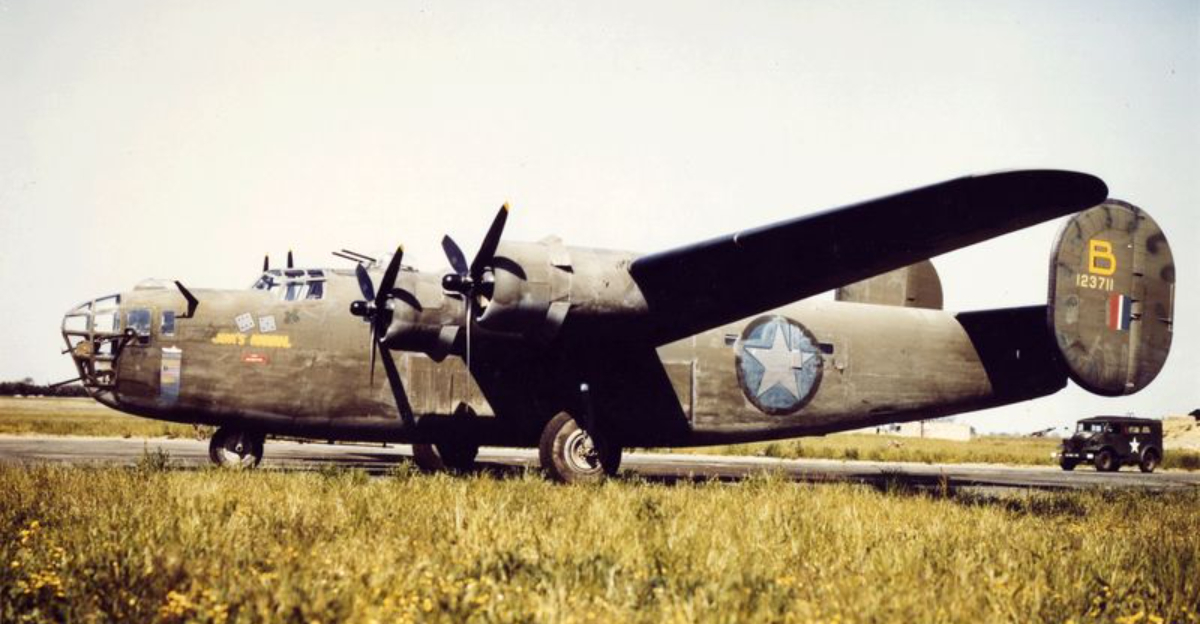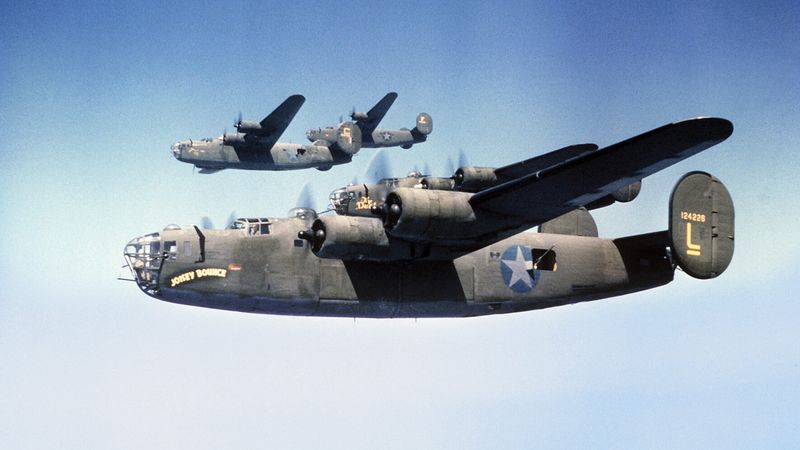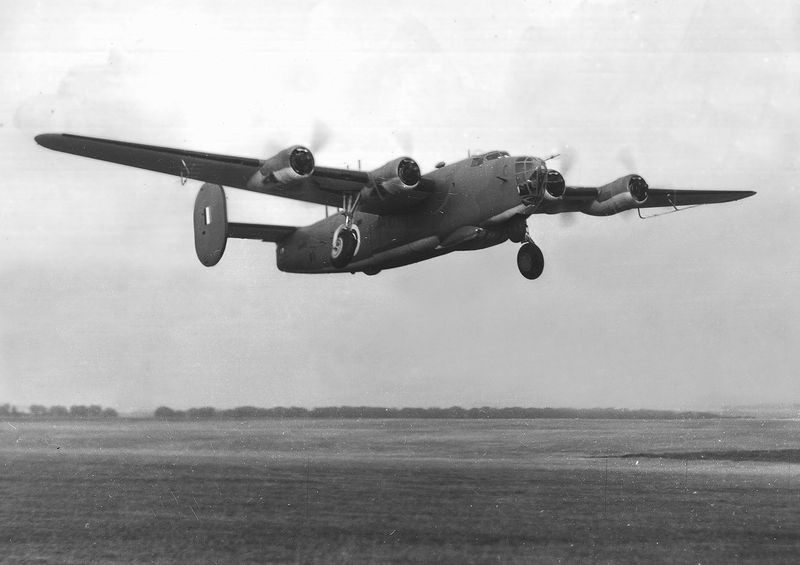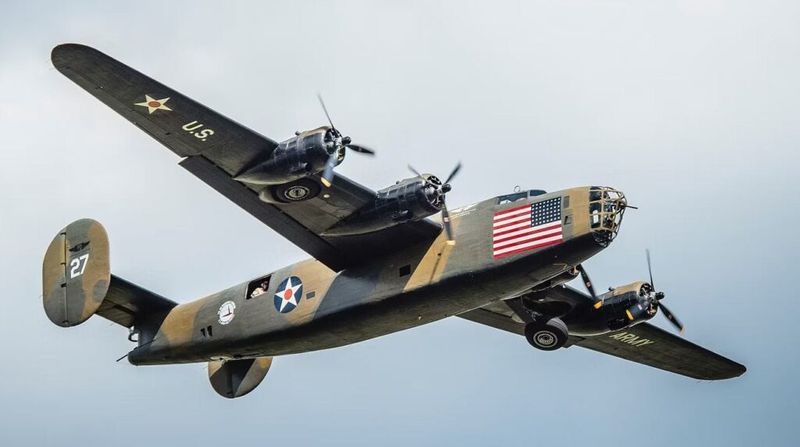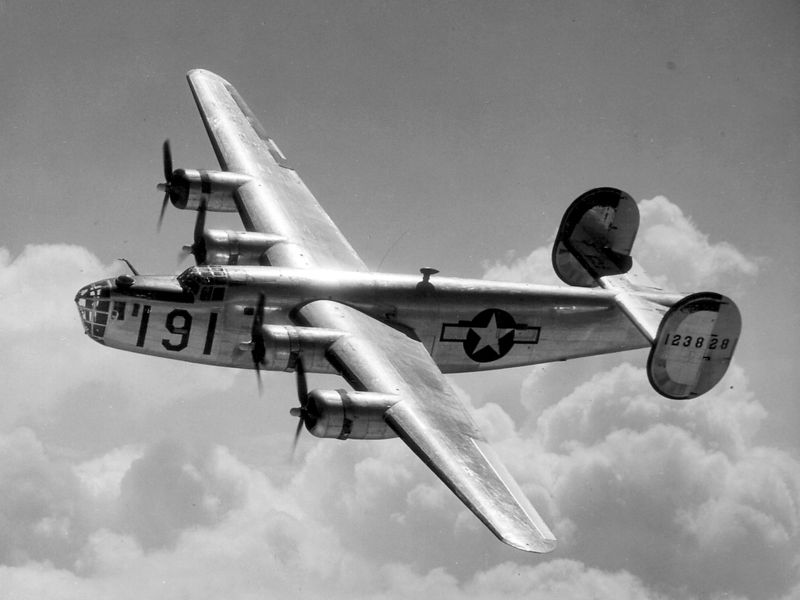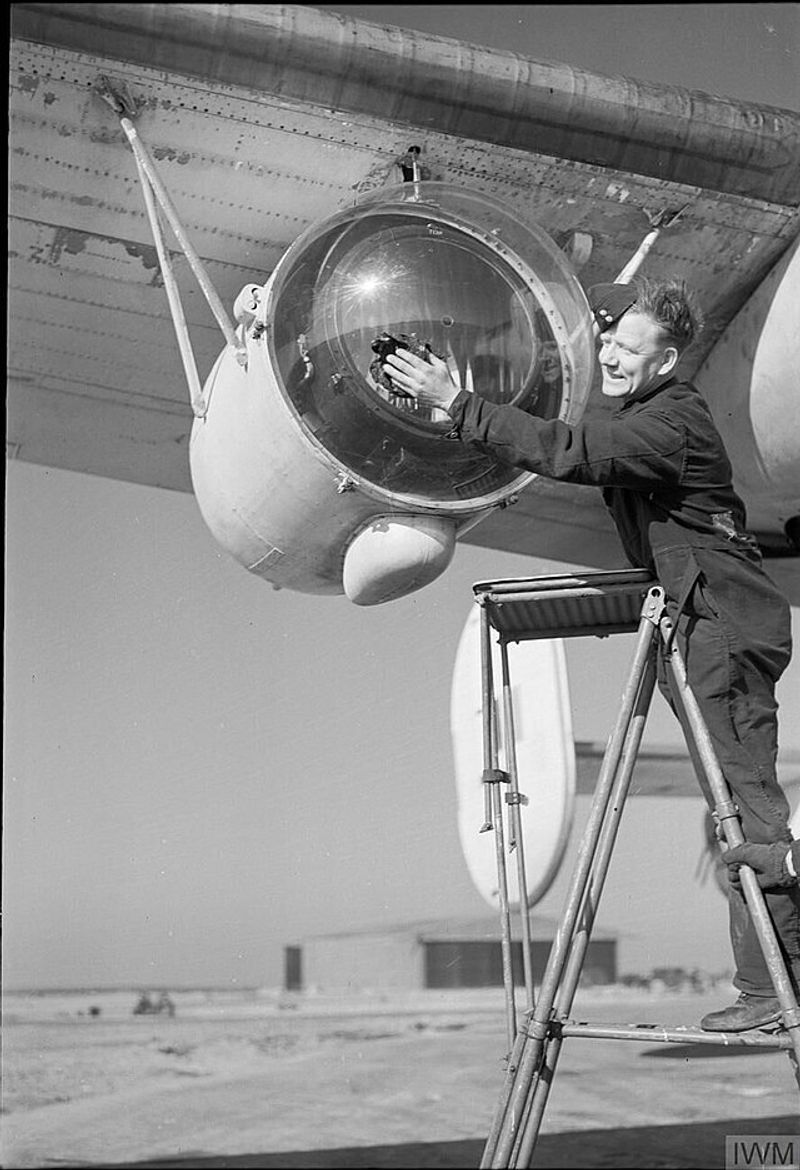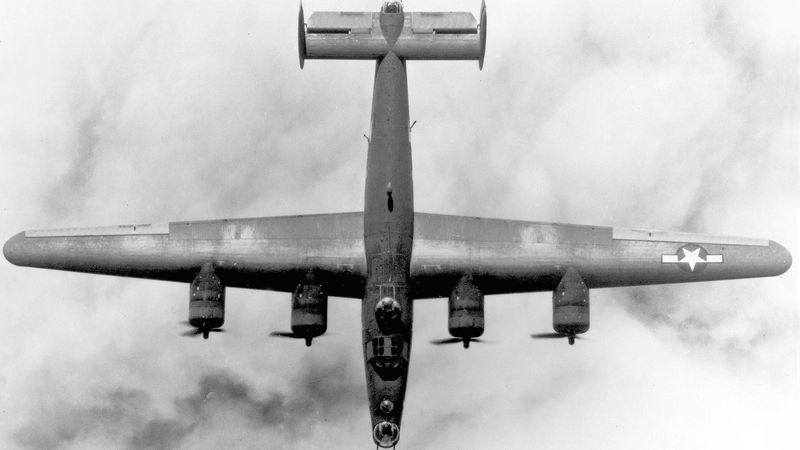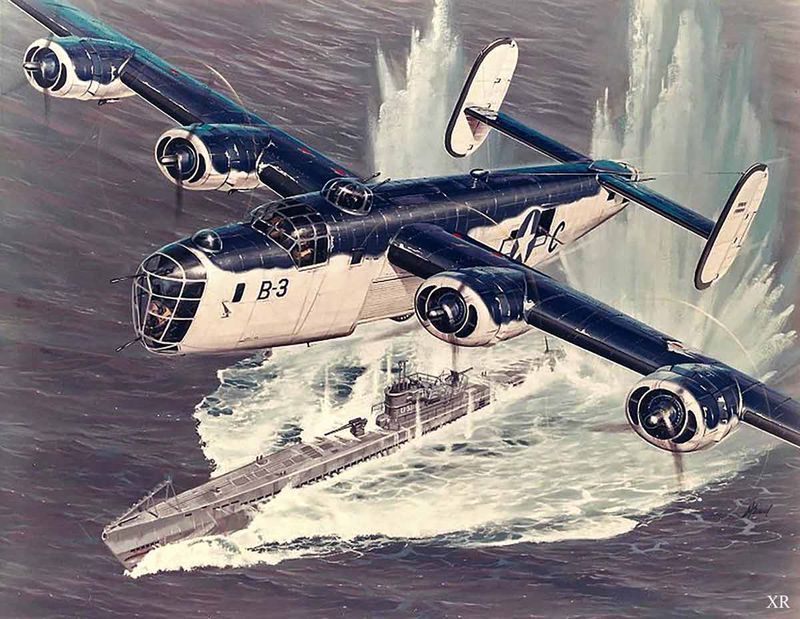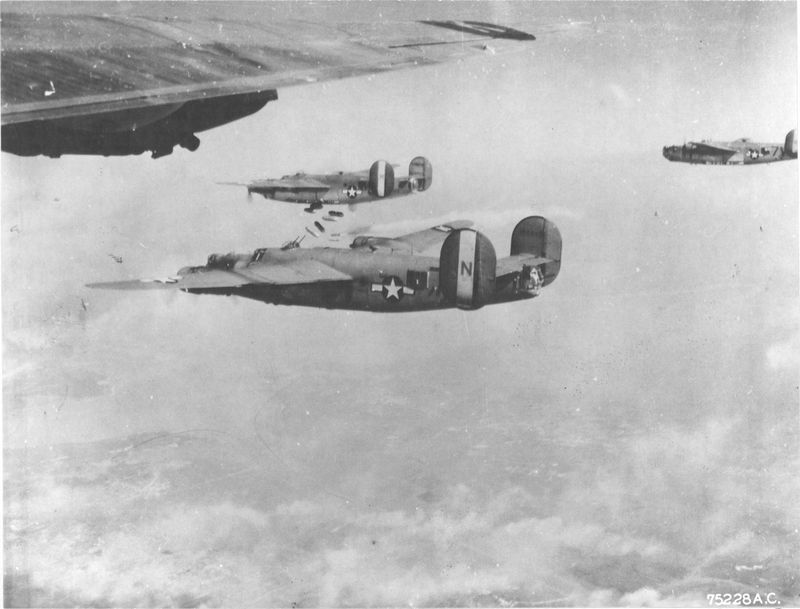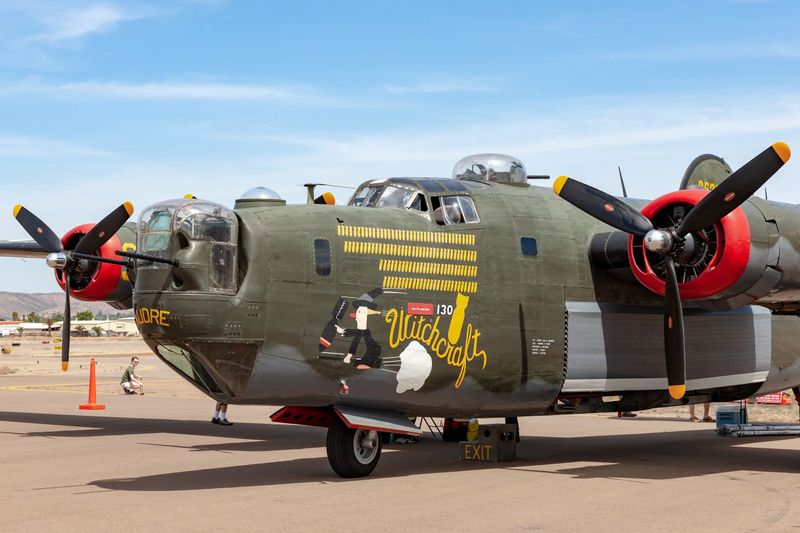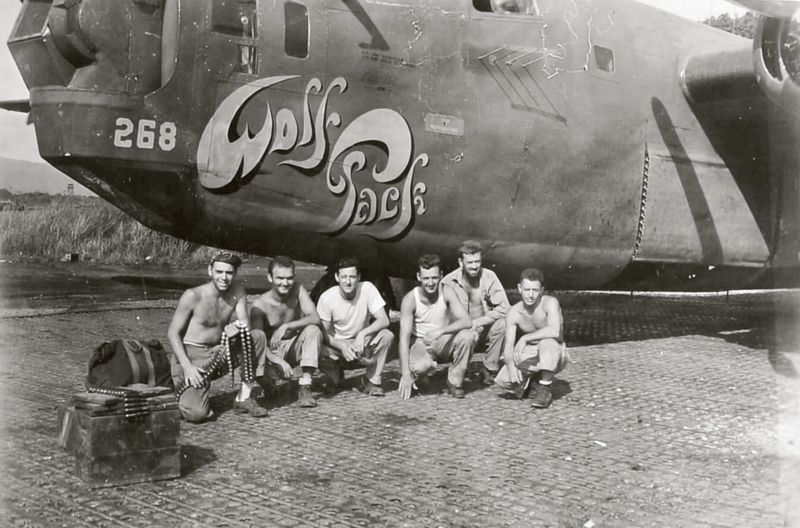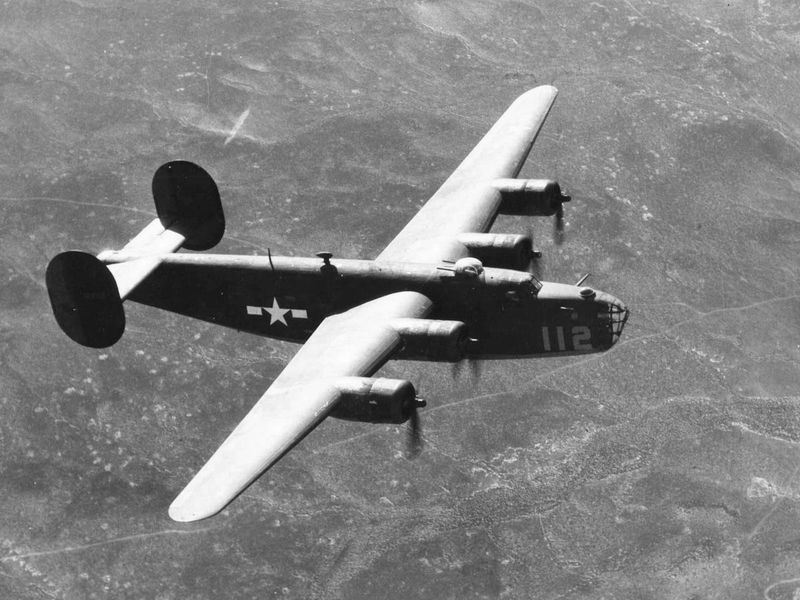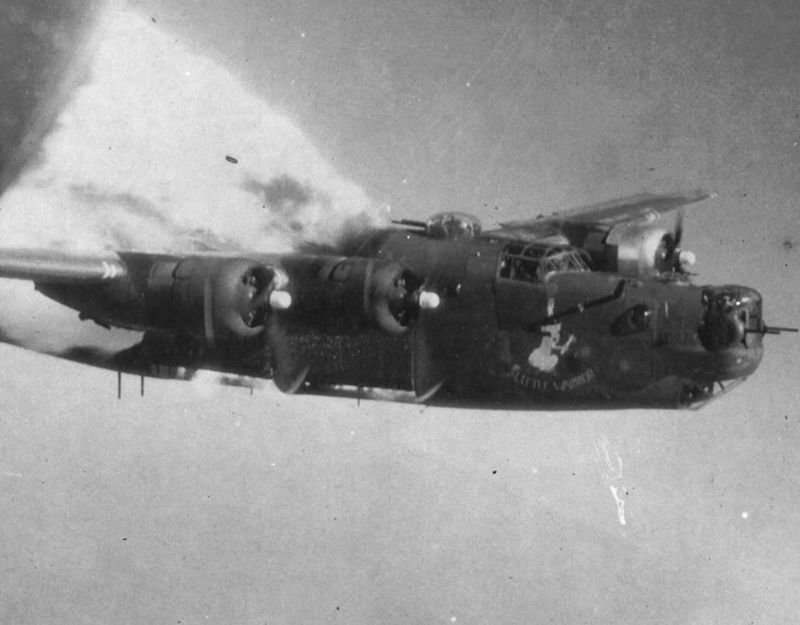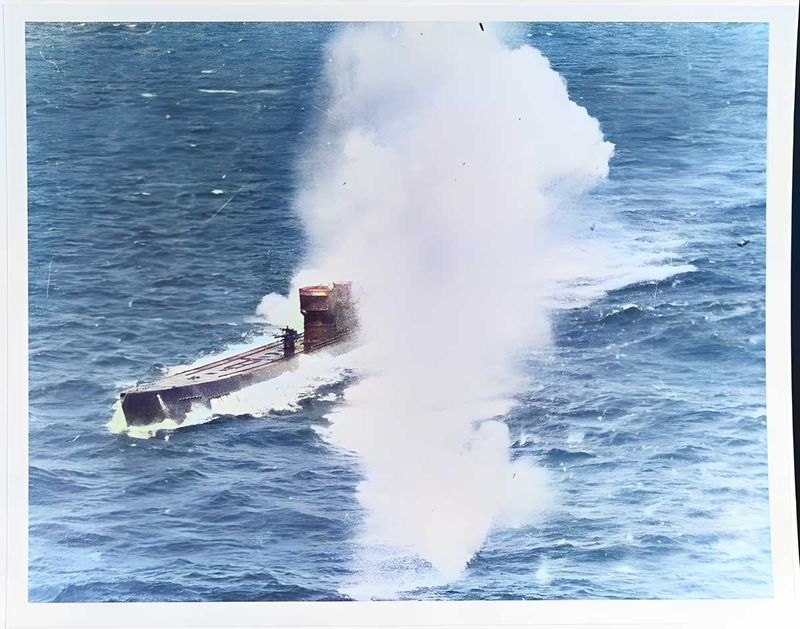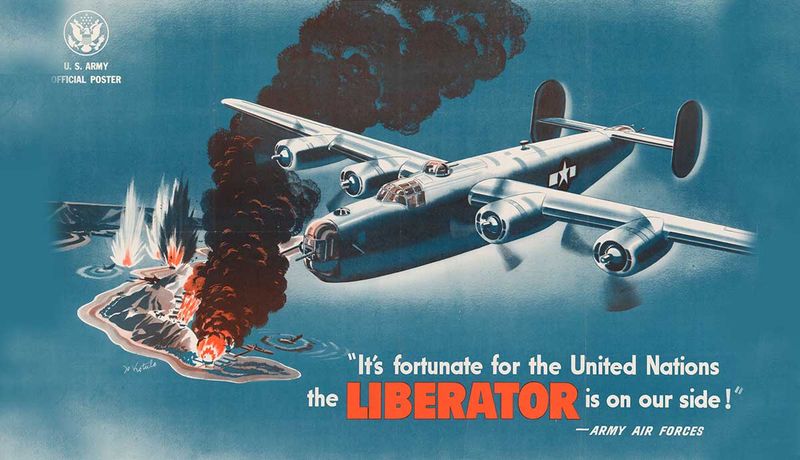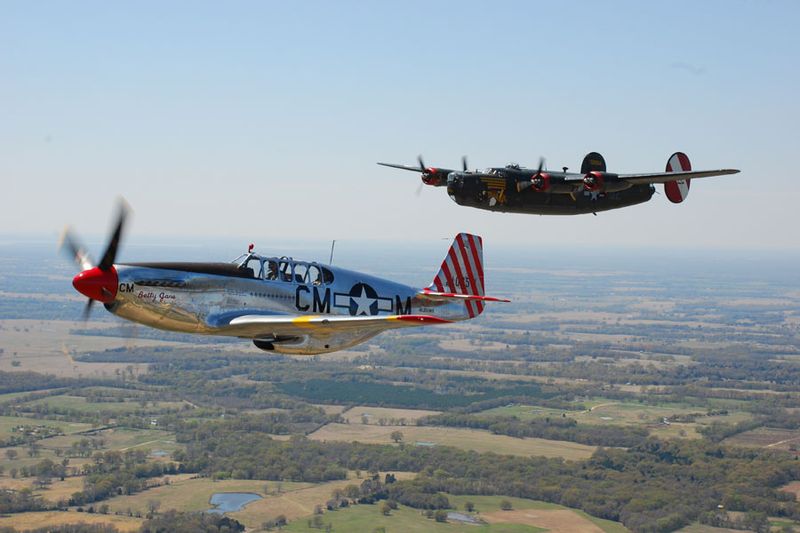The B-24 Liberator, a formidable aircraft from World War II, remains a symbol of innovation and bravery in the fight against Nazi submarines. Originally designed as a heavy bomber, it was repurposed to become one of the most effective sub hunters in history.
With its remarkable range, advanced technology, and dedicated crews, the B-24 played a critical role in turning the tide during the Battle of the Atlantic.
As we uncover the secrets of this legendary bomber, we gain insight into the ingenuity and courage that characterized the Allies’ efforts to secure victory at sea.
1. It Wasn’t Built for Sub Hunting at First
The B-24 Liberator was initially crafted as a heavy bomber, not specifically for hunting submarines. This versatile aircraft was later adapted to become a formidable anti-submarine weapon.
Though it wasn’t born for this purpose, its design allowed it to excel in the role. The B-24’s capacity to carry a variety of payloads made it suitable for anti-sub warfare.
Over time, its adaptability enabled it to stalk Nazi submarines with relentless efficiency. Its transformation into a sub hunter is a testament to its engineering brilliance and strategic value.
2. It Had Record-Breaking Range
The B-24 Liberator boasted an astonishing range of over 2,100 miles, enabling it to patrol vast expanses of ocean teeming with enemy submarines. This unprecedented range made it a game-changer in anti-submarine warfare.
It could cover areas previously unreachable by other aircraft, closing the dangerous “Mid-Atlantic Gap.” This capability allowed Allied forces to maintain a constant presence over strategic waters.
The B-24’s long-range prowess was a crucial factor in its effectiveness against the elusive Nazi U-boats, reshaping naval warfare during the conflict.
3. U-Boats Feared the “Lib”
The German submariners had a nickname for the B-24 Liberator: “The Flying Coffin.” Unlike what it suggests, this term wasn’t about the crew’s peril but rather reflected the dread it instilled in U-boat crews.
The sight of a B-24 overhead signaled imminent danger, as these bombers were adept at locating and targeting submarines. The B-24’s reputation spread across the Atlantic, becoming a symbol of relentless aerial pursuit.
The fear it sparked among submarine crews highlighted its effectiveness and psychological impact in the war against the Nazi wolf packs.
4. It Helped Win the Battle of the Atlantic
The B-24 Liberator was instrumental in closing the “Mid-Atlantic Gap,” a previously unpatrollable expanse where U-boats operated without hindrance. By filling this void, the B-24s contributed decisively to the Allied victory in the Battle of the Atlantic.
Their presence deterred U-boats from attacking convoys, safeguarding vital supply routes.
The B-24’s relentless patrols ensured that the Allies could maintain a steady flow of troops and materials. Through their efforts, these bombers turned the tide against the German submarine threat, significantly impacting the war’s outcome.
5. They Patrolled Nonstop
Missions aboard the B-24 Liberator often extended beyond 12 hours, demanding extraordinary stamina from the crew. These extended patrols were essential for maintaining pressure on enemy submarines.
The crew scanned the vast ocean meticulously, searching for any sign of a periscope or oil slick. This grueling schedule tested the physical and mental limits of those on board.
Despite the challenges, their relentless vigilance ensured that the B-24s maintained an unyielding presence over the Atlantic. Their dedication and endurance were crucial to the success of these nonstop missions.
6. It Carried Radar Before It Was Cool
The B-24 Liberator was among the first aircraft to be fitted with surface-search radar, a groundbreaking innovation at the time. This advanced technology transformed the bomber into a highly effective submarine hunter.
The radar enabled the crew to detect submerged U-boats, even in challenging weather or darkness. This capability revolutionized anti-submarine warfare, allowing the Allies to locate and engage hidden threats.
The B-24’s use of radar set the stage for future advancements in aerial surveillance, making it a pioneer in electronic warfare technology.
7. Some Carried Leigh Lights
Certain B-24 Liberators were equipped with powerful Leigh Lights, which illuminated enemy U-boats attempting to surface under the cover of night. These searchlights were mounted beneath the aircraft and were a game-changer in night operations.
By revealing the position of submarines, the B-24s could coordinate attacks with precision. The Leigh Lights enhanced the bombers’ effectiveness, ensuring that the enemy could not hide even in darkness.
This innovation demonstrated the creative solutions employed by the Allies to overcome the challenges of wartime submarine hunting.
8. It Could Fly Higher—and Lower—Than Many Sub Hunters
The B-24 Liberator’s impressive altitude range allowed it to cruise at 28,000 feet or dive low for surprise attacks on enemy submarines. This versatility made it a formidable adversary in anti-submarine warfare.
By reaching high altitudes, it could avoid detection and survey large areas quickly. When needed, it could swoop down to unleash a devastating attack.
This capability provided strategic flexibility, enabling the B-24 to adapt to various combat scenarios. Its ability to operate at such varied altitudes was a key factor in its success as a sub hunter.
9. They Dropped Depth Charges, Not Just Bombs
Modified B-24 Liberators were equipped to drop depth charges, adding a lethal dimension to their anti-submarine arsenal. These charges were designed to explode underwater, delivering a concussive force capable of crippling or destroying U-boats.
This adaptation allowed the B-24s to engage submarines more effectively than conventional bombs. The use of depth charges expanded the bomber’s tactical options, providing a direct method to neutralize submerged threats.
This capability further cemented the B-24’s reputation as a versatile and deadly opponent in the battle against the Nazi submarine menace.
10. The Crew Had to Be Hyper-Vigilant
Vigilance was paramount for B-24 Liberator crews as they patrolled the vast ocean expanses. Spotting enemy submarines often depended on identifying subtle clues like a periscope wake or an oil slick.
The crew’s ability to notice these details could mean the difference between life and death. Their training and focus were crucial in identifying and reacting to potential threats swiftly.
The relentless pressure to remain alert tested the mental fortitude of every crew member. This heightened vigilance was a critical element in safeguarding Allied convoys and disrupting enemy operations.
11. They Were Eyes in the Sky for Convoys
The B-24 Liberators served as vigilant guardians over Allied convoys, acting as eyes in the sky against lurking submarines. Their presence deterred U-boat attacks, ensuring the safe passage of vital supplies and troops across perilous waters.
By flying protective patrols, the B-24s played a pivotal role in maintaining the lifeline between continents. Their ability to spot and engage enemy threats provided an indispensable shield for merchant vessels.
Through their persistent efforts, these bombers contributed to the successful transportation of essential resources critical to the war effort.
12. They Turned the Tide Against the Wolf Packs
Germany’s notorious U-boat “wolf packs” were a formidable threat, coordinating attacks on Allied convoys with devastating efficiency. The introduction of B-24 Liberators shifted the balance in these engagements.
Armed with advanced technology and relentless determination, the bombers disrupted the coordinated efforts of the U-boats. By locating and targeting these submarines, the B-24s broke the wolf packs’ stranglehold on the Atlantic.
Their success in these encounters marked a turning point in naval warfare, weakening the German strategy and contributing to the Allies’ eventual victory in the Atlantic theater.
13. Crews Faced Harsh, Cold, and Isolated Flights
Life aboard a B-24 Liberator was marked by harsh conditions, with crews enduring cold, cramped, and isolated flights over vast ocean stretches. The bomber’s lack of insulation meant that temperatures inside could plummet, making missions uncomfortable and challenging.
Despite these conditions, crews remained focused on their critical tasks, scanning the seas for enemy submarines.
The physical and mental toll of these grueling missions tested the endurance of every airman. Yet, their resilience and commitment to duty ensured the continued success of the B-24’s crucial patrols in the Atlantic theater.
14. It Was the Most Produced Bomber of WWII
The B-24 Liberator holds the distinction of being the most produced bomber of World War II, with over 18,000 units built. This remarkable production feat underscores its importance and versatility as a military asset.
Factories across the United States worked tirelessly to meet the demands of wartime production, turning out these bombers at an unprecedented rate.
The sheer number of B-24s deployed across various theaters of war was a testament to their effectiveness and adaptability. Their widespread use made them a cornerstone of Allied air operations, playing a vital role in numerous campaigns.
15. Its Role Was Kept Quiet at First
Initially, the B-24 Liberator’s anti-submarine missions were shrouded in secrecy, with many details remaining classified. The sensitive nature of these operations meant that airmen often refrained from discussing their experiences.
The clandestine nature of their work was crucial in maintaining the element of surprise against enemy submarines. This veil of secrecy also protected the intelligence sources and methods that guided these missions.
The quiet execution of these operations played a significant role in their success, allowing the B-24s to continue their vital work with minimal interference from enemy forces.
16. It Worked Closely With Navy Intelligence
The B-24 Liberator’s missions were intricately coordinated with Navy intelligence, leveraging decoded German transmissions from the Enigma machine. This collaboration enabled the bombers to target submarines with remarkable precision.
By integrating intelligence insights, the B-24s maximized their effectiveness, preemptively striking at enemy forces. This synergy between air and naval units underscored the importance of information in modern warfare.
The successful fusion of aerial power with strategic intelligence allowed the Allies to disrupt submarine operations and ultimately gain the upper hand in the Battle of the Atlantic.
17. They Sank Dozens of U-Boats
The B-24 Liberator bombers were credited with the destruction of over 90 German submarines during World War II. This impressive tally was a testament to their effectiveness as submarine hunters.
Each successful mission not only reduced the enemy’s operational capabilities but also boosted Allied morale. The bombers’ ability to locate, track, and engage U-boats with precision made them an indispensable asset in the anti-submarine campaign.
Their contributions to the war effort were instrumental in diminishing the U-boat threat, securing vital supply routes, and ensuring the success of Allied naval operations.
18. Their Legacy Lives on in Modern Sub Hunting Tactics
The pioneering missions of the B-24 Liberator continue to influence modern sub-hunting tactics, as seen in today’s advanced aircraft like the P-8 Poseidon. The innovative strategies and technologies developed during WWII laid the groundwork for contemporary anti-submarine operations.
Techniques such as coordinated patrols, the integration of intelligence, and the use of radar remain central to modern practices.
The legacy of the B-24’s relentless pursuit of submarines endures, shaping the evolution of aerial maritime surveillance and ensuring the continued security of global sea lanes.
19. Some Still Fly Today as Restored Warbirds
A handful of B-24 Liberators continue to soar today, lovingly restored and preserved by dedicated enthusiasts. These historic aircraft participate in airshows worldwide, offering a tangible connection to the past.
Flying as warbirds, they serve as a tribute to the crews who bravely patrolled the seas during WWII. Their continued operation underscores the enduring legacy of the B-24, keeping the memory of its vital role alive for new generations.
These restored bombers inspire awe and respect, reminding us of the challenges faced and overcome by those who served in these legendary aircraft.
